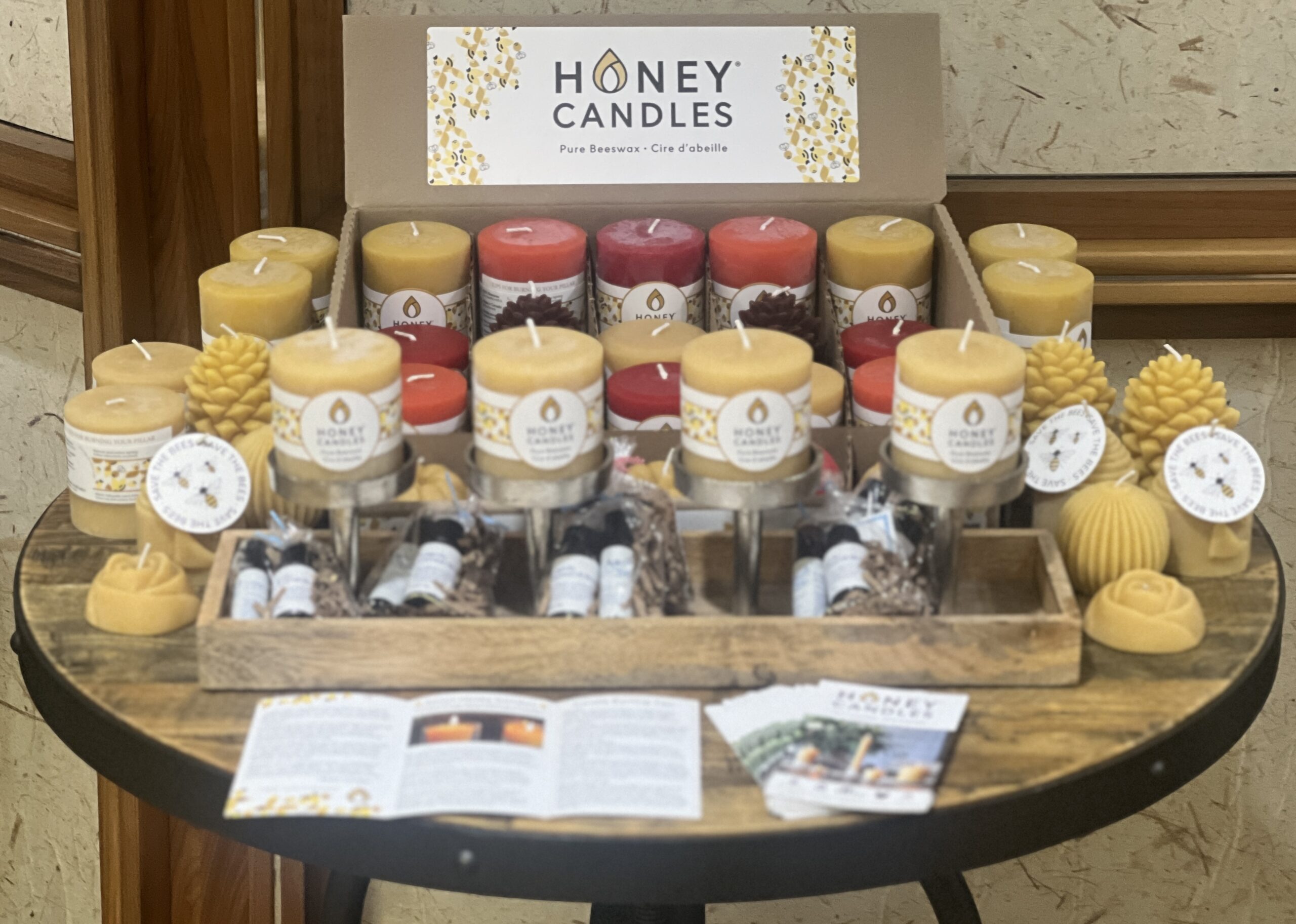Estimated Time to Read: 4-5 minutes
We are thrilled to announce a new addition to our product lineup — Honey Candles available in office only while supplies last! As advocates for quality and sustainability, we are excited to offer a line of candles that not only light up your space but also contribute to a healthier, more balanced environment. Here’s why they are the perfect choice for those who value both wellness and eco-friendliness.
Comments from patients: “This is not a one of those candles you will ever re-gift!” | “The long burn times are amazing!” | “I love the office’s suggestion of adding my favorite essential oil to the melted wax in the candle to be ‘extra’!”
Why Honey Candles?
Honey Candles, a distinguished name in the candle industry, is renowned for its commitment to producing 100% pure beeswax candles. Their dedication to quality is evident in every aspect of their products. Here’s why we’re proud to carry their line:
- Health Benefits of Beeswax Candles: Unlike conventional paraffin candles, which are made from petroleum-based products, Honey Candles are crafted from pure beeswax. Beeswax candles are not only a natural alternative but also offer several health benefits:
- Air Purification: Beeswax candles are known for their air-purifying properties. When burned, beeswax candles release negative ions into the air. These negative ions help to neutralize pollutants and allergens, improving air quality. According to research, negative ions can help reduce airborne dust, mold, and other contaminants, which can be particularly beneficial for those with allergies or respiratory issues (Source: Journal of Environmental Science and Health).
- Reduced Toxic Emissions: Beeswax candles burn cleanly, producing minimal soot compared to paraffin candles. This means fewer indoor air pollutants and toxins, contributing to a healthier living environment (Source: Environmental Health Perspectives).
- Chemical-Free Peace of Mind: Many conventional candles are made from paraffin wax, which can release harmful chemicals such as toluene and benzene when burned. These chemicals are known to disrupt hormone levels and contribute to health issues, including respiratory problems and hormonal imbalances (Source: American Lung Association). Honey Candles, on the other hand, are entirely free from synthetic additives, dyes, and fragrances. By choosing Honey Candles, you are opting for a product that aligns with a chemical-free lifestyle, safeguarding your home and health from potential irritants and toxins.
- Sustainability and Eco-Friendliness: Honey Candles takes pride in its eco-friendly approach. The beeswax used is a natural byproduct of honey production, making it a renewable resource. Additionally, their candles are produced without the use of paraffin or synthetic additives, ensuring a minimal environmental footprint.Supporting Honey Candles means supporting sustainable practices and contributing to the well-being of our planet. By reducing the demand for non-renewable resources and minimizing pollution, you’re making a positive impact on the environment with every candle you burn.
For those interested: the wick is made of cotton only (no lead or zinc cores) for a natural safe burn.
In Summary
We are honored to bring Honey Candles’ exceptional range to our customers. Their commitment to pure, natural ingredients aligns perfectly with our mission to provide products that promote health and well-being. By choosing Honey Candles, you are investing in clean air, reducing exposure to harmful chemicals, and supporting sustainable practices.
We invite you to explore our new selection of Honey Candles and experience the benefits of a cleaner, healthier home environment. Let the natural warmth and soothing glow of beeswax candles enhance your space while contributing to your overall wellness.
For more information about Honey Candles and to browse our collection, stop on by and visit our lobby. Light up your life with the purity of beeswax and make a positive difference for your health and the environment.
Like this article? Find more health and wellness blogs on our resources page.



